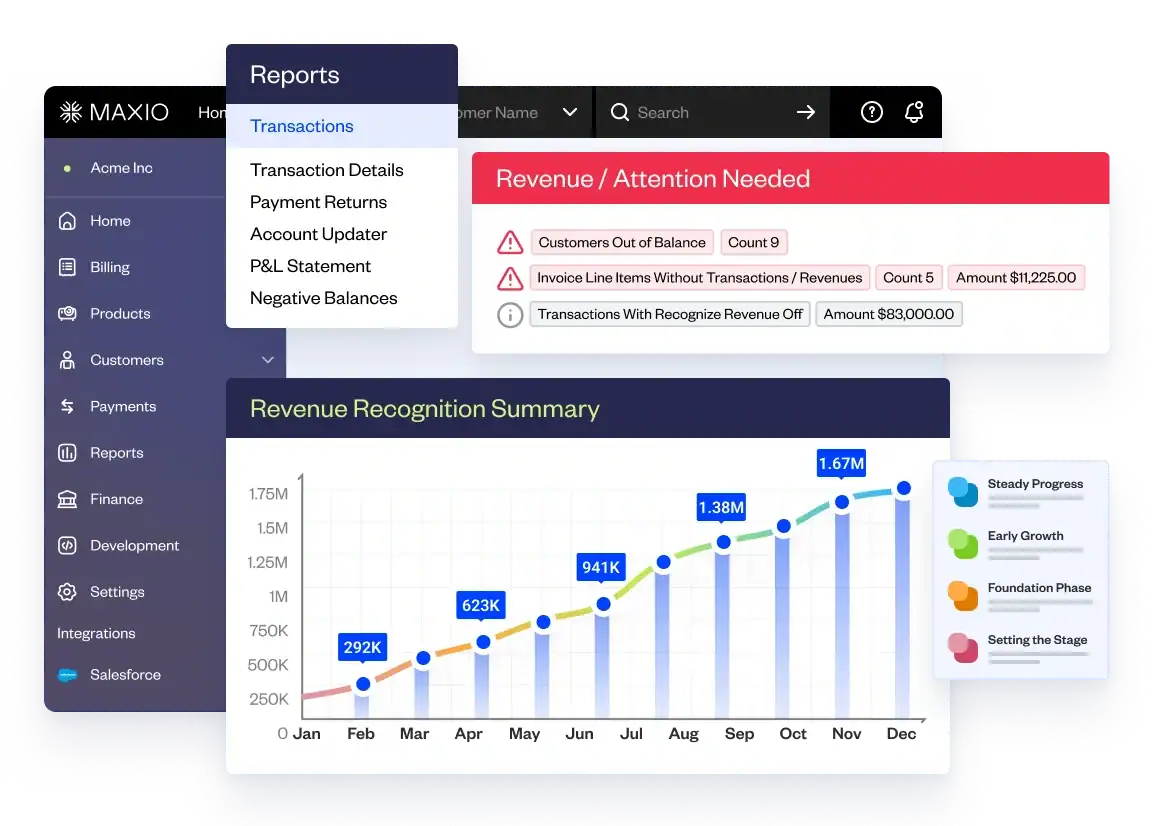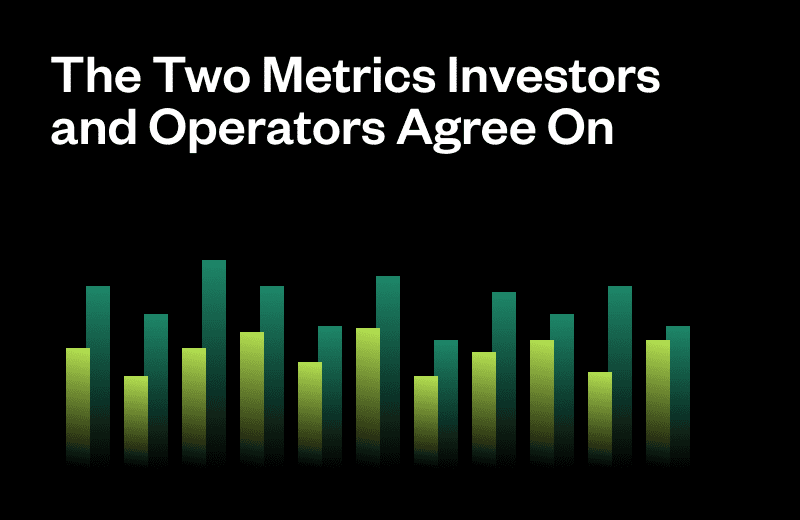Monthly Recurring Revenue (MRR) is one of many ways to measure your predictable revenue stream. Its primary purpose is to permit performance reporting across dissimilar subscription terms (e.g. MRR from renewals vs. MRR from new sales). Whether you use a tool like Maxio or a spreadsheet to calculate MRR, your report will look something like this.

Variations might include a list of the customer names, or simply a summary without the detailed category line items.
However, calculating MRR isn’t as simple as it seems. The term isn’t officially defined by either the FASB or GAAP, which means there are no set rules to define the calculations for the various MRR numbers needed to understand business momentum.
The Only Way to Get an MRR Calculation
However you recognize revenue, the hard truth is that you can’t get an MRR calculation from any financial reporting system alone.Why? ERPs and General ledgers:
- Don’t differentiate revenue from new transactions and those from renewal transactions (so you can’t report on MRR from renewal vs. new sales).
- Don’t track lost revenue from canceled or non-renewed contracts (i.e. no tracking MRR from revenue churn).
- Don’t make it easy to track or calculate net changes (net upgrade/downgrade values).
- And even those with revenue recognition functionality don’t report GAAP revenue in actual calendar months, which as we will see, is not an MRR component.
The inability to differentiate between MRR types becomes apparent after only an hour or two of reporting. What’s harder to understand is that none of the components necessary to calculate MRR can be gathered from your revenue recognition schedule. This is true whether your record system is Excel or a more sophisticated tool, like Maxio.
Two key issues arise when using financial or “reported revenues” to calculate MRR:
- Using a daily revenue recognition schedule causes a monthly 3% variation in revenue due simply to the varying number of days in each month (30, 31, 28, or even 29).
- Unless you start all revenue recognition on the first day of the month, you’ll see partial-month revenue streams.
Spreadsheets and ERPs simply fall short when it comes to MRR calculations. The only way to leap both of these hurdles at once is with a true financial system.
MRR Calculation is Largely an Exercise in Exception Management
At first, performing the actual MRR calculation seems simple. Just sum the recurring revenue generated by a given month. Easy right?
Unfortunately, while this formula seems straightforward, the calculation becomes more and more difficult as your transaction values increase. This is why it’s critical to establish a clear definition of how your company will calculate MRR (and the earlier, the better). Neglecting to define your calculations early on could lead to considerable pain down the road.
MRR Calculations in Action
Calculating MRR is a mostly straightforward process. However, every once in a while an out-of-the-ordinary situation can throw your finance team a curve ball. Let’s explore four common business scenarios and determine how to perform an accurate MRR calculation for each one.
1. First- and End-of-Month Start Dates
In our first scenario, a new company is signed for a $120,000 annual contract. The contract starts on May 1, 2020 and ends on April 30, 2021. As the contract comes to a close, the client chooses not to renew.
How much Monthly Recurring Revenue was added and when?
Answer: $10,000 in May 2020, specifically on May 1, 2020.
While the entire $120,000 may be paid upfront, in order to maintain GAAP compliance, this revenue must be recognized at the time service is delivered—not the time the money was received. Therefore, this business is recognizing this revenue monthly: $120,000 / 12 months = $10,000 per month.
How much Monthly Recurring Revenue was lost and when?
Answer: $10,000 was lost, but in which month? We would suggest in May 2021, which is when the contract otherwise would have been renewed (specifically on May 1, 2021).
This scenario showcases why establishing definitions around MRR reporting upfront is critical for clean reporting. Unless clearly defined, someone could easily record the loss on April 30, 2021, the last day of the term. In doing so, your MRR report will show that your company both gained and lost $10K within a single 12-month period.
2. Mid-Month Start Dates
In our second scenario, a new $120,000 annual contract starts on May 15, 2020 and ends on May 14, 2021. The contract does not renew.
How much Monthly Recurring Revenue was added and when?
Answer: $10,000 in May 2020, specifically on May 15, 2020.
How much Monthly Recurring Revenue was lost and when?
Answer: $10,000 in May 2021, specifically on May 15, 2021, when the contract did not renew.
3. Gaps in Contracts
In this example, A new $120,000 annual contract starts on May 15, 2020 and ends on May 14, 2021. After a gap due to contract negotiations, the contract renews for $120,000 on June 26, 2021 for a new term through June 25, 2022.
How much new Monthly Recurring Revenue was added and when?
Answer: $10,000 on May 15, 2020.
How much Monthly Recurring Revenue was renewed and when?
Answer: This depends on how you decide to perform your MRR calculation. Your company may consider this a non-renewal in May 2021 and a renewal in June 2021. In this case, the contract would be placed into a bucket of “open renewals” in May, simply renewing it in June 2021 or renewing it effective May 15, 2021 at $9,230 MRR (effectively discounting it by considering it a 13-month term).
Or perhaps your company doesn’t consider this particular calculation helpful to reporting on progress. So you may simply choose not to worry about it and report the revenue as an entirely new contract. There’s no “right” answer. What’s important here is maintaining consistency in how you report these numbers.
4. Early Renewal Upgrades
Here, a new $120,000 annual contract starts on May 15, 2020, and ends on May 14, 2021. The customer orders an upgrade on December 31 for an additional $247,000 which goes into effect January 15, with the new end date of September 18, 2024.
How much new Monthly Recurring Revenue was added and when?
Answer: That one is still easy. $10,000 on May 15, 2020.
How much Monthly Recurring Revenue was renewed or upgraded and when?
Answer: It’s up to you! Define the Monthly Recurring Revenue rules as best you can and record the transactions consistently.
Unless each contract has the same duration, you have to normalize the contracts in order to perform the simple mathematical calculations of addition and subtraction.





